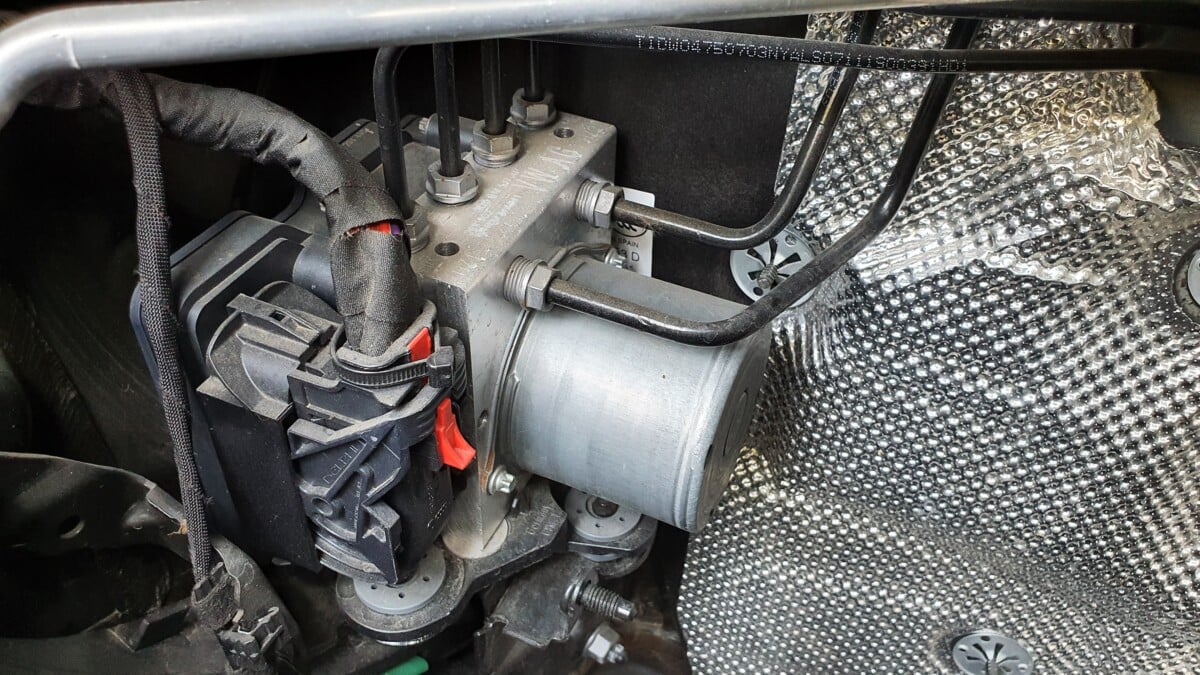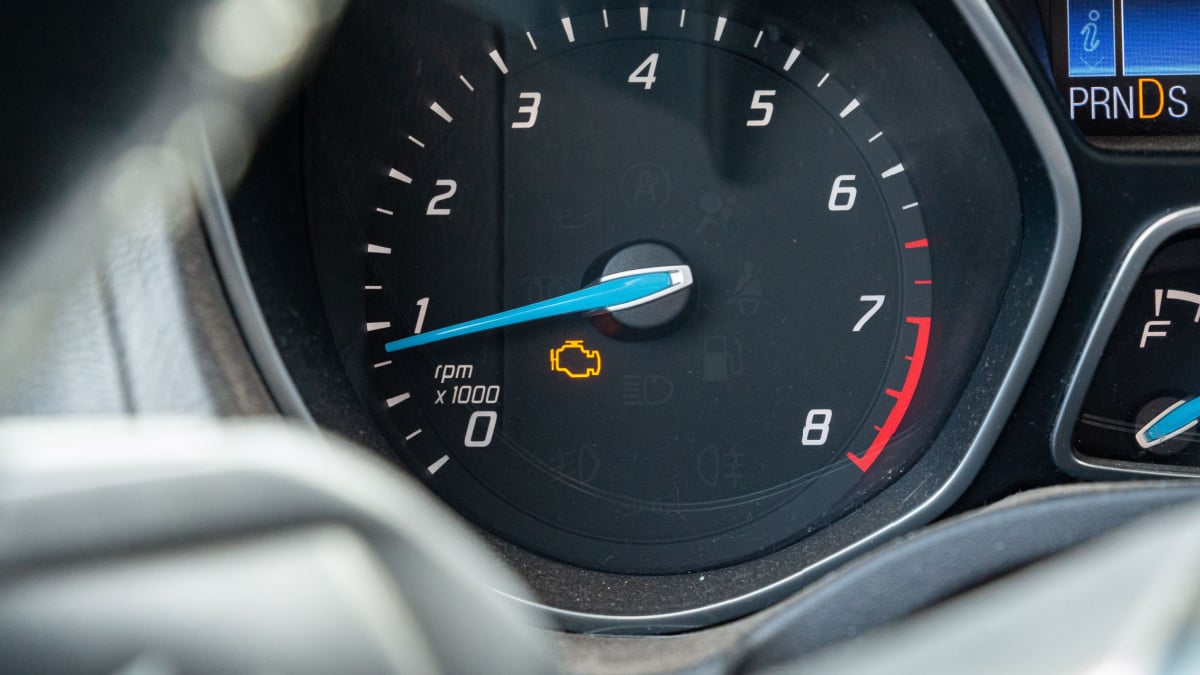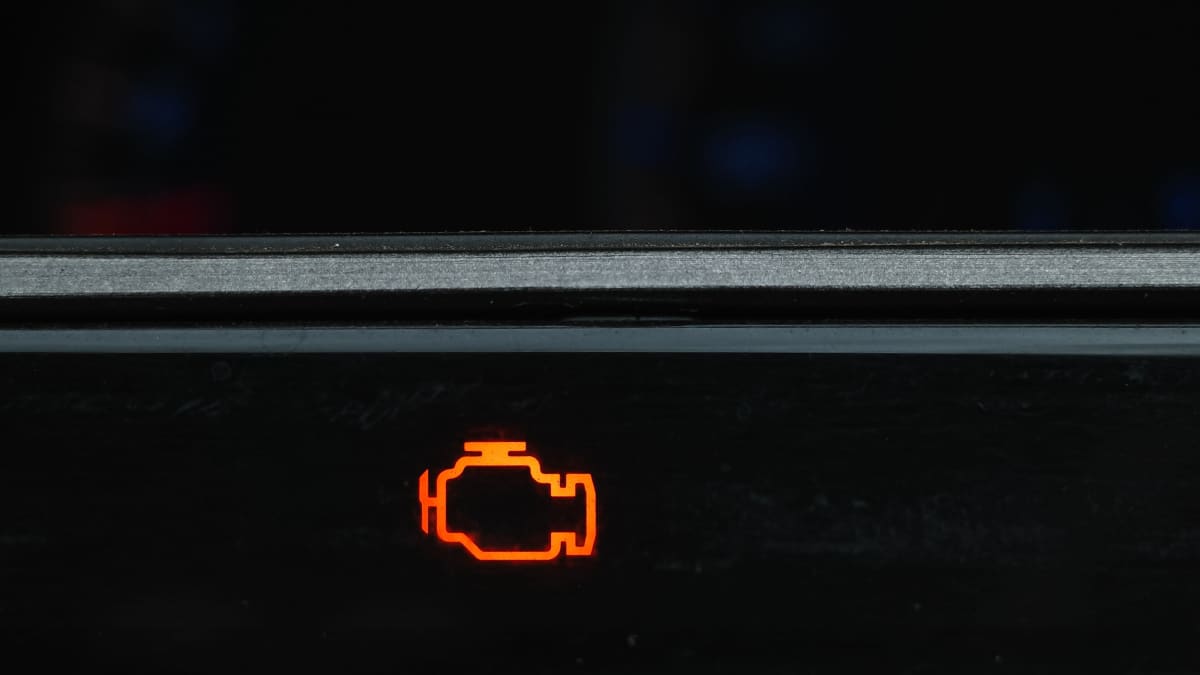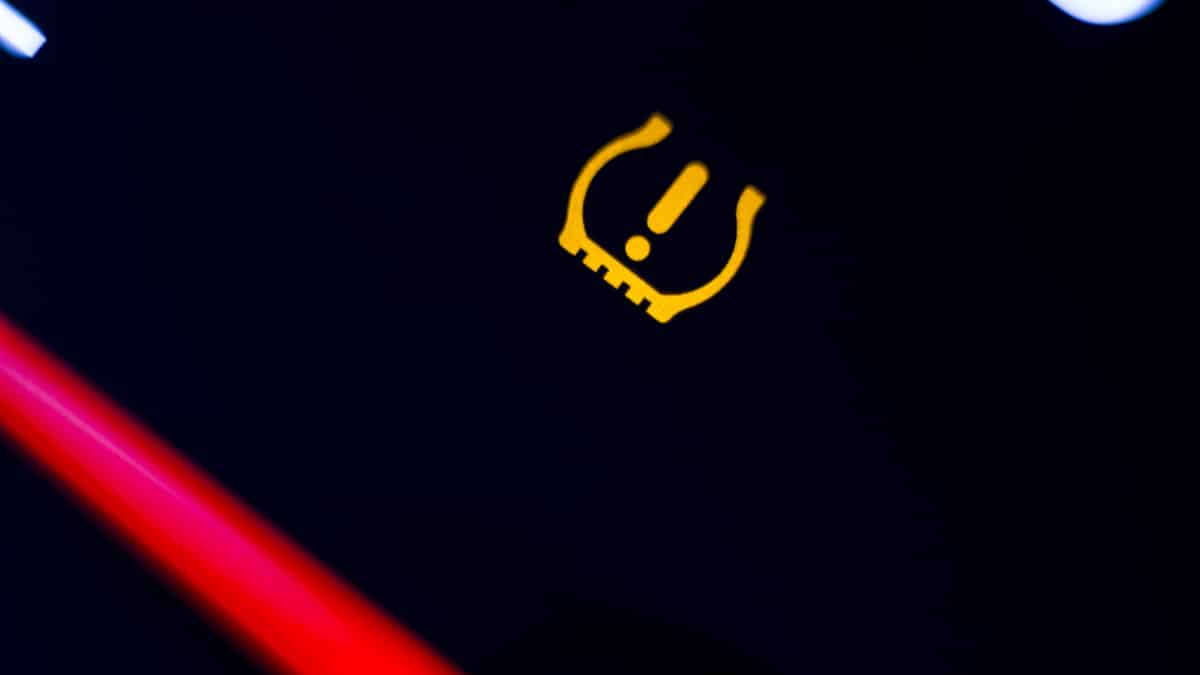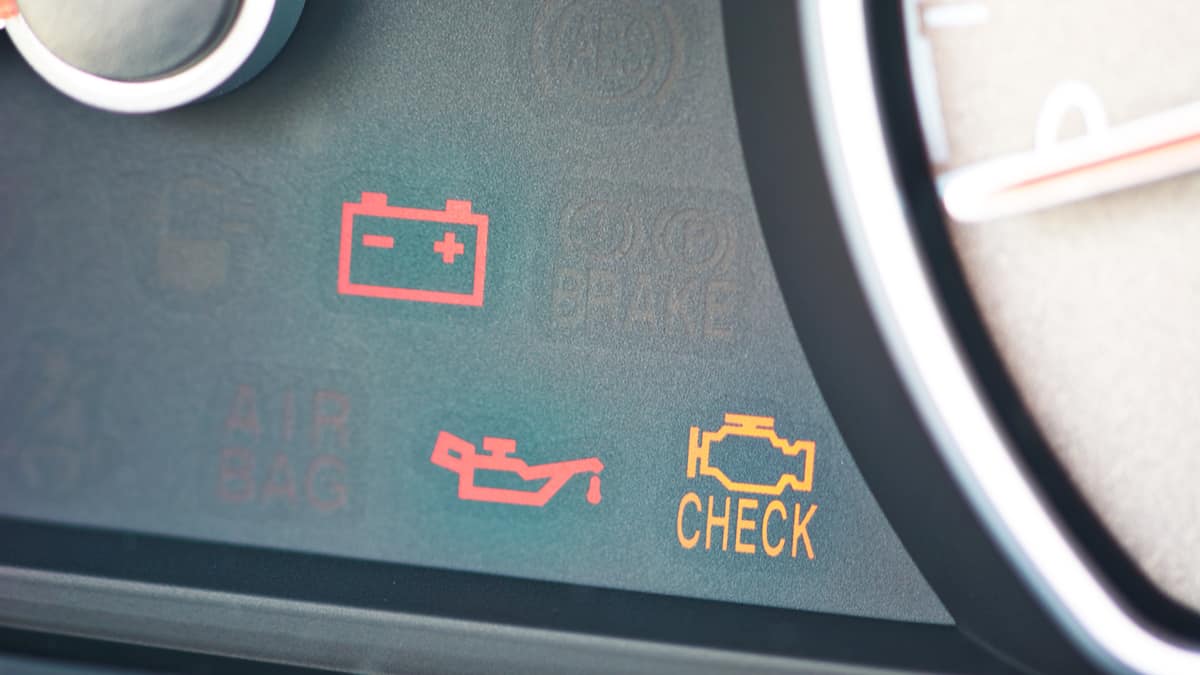If you own a car, there’s a good chance you’ve seen the ABS light come on at some point. But what does it mean? What causes it to turn on? And is it safe to drive with it lit up?
In this post, I’ll answer all those questions and more. Read on to learn everything you need to know about the ABS light!
What does the ABS Light mean?
An ABS light on your car’s dashboard means there is an issue with the car’s anti-lock braking system. The Anti-lock Braking System (ABS) is a safety system that prevents the wheels of a vehicle from locking up when braking, and this warning tells you that the system is not working as intended.
When you turn on the vehicle’s ignition, you should see the ABS light come on for a second as the system performs diagnostics. After this self-check, the light should turn off.
If it doesn’t light up at all, the bulb might have burnt out. On the other hand, if the ABS light doesn’t turn off or it comes on while you are driving, you need to figure out what’s causing the alert.
Causes of the ABS Light
1. Bad Speed Sensor
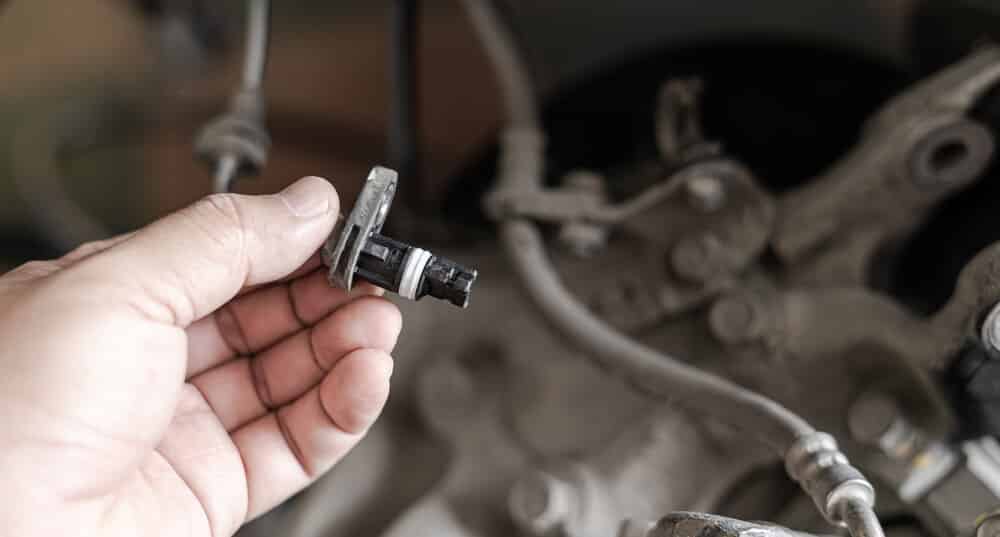
The wheel speed sensor takes the rate at which the wheels are moving and reports it to the ECU. With this information, the ECU can determine how to use the ABS. If the ECU sees that one of the wheels is moving faster than another, it will push out more brake fluid, allowing the wheel to move at a slower rate to increase grip on the pavement.
When the speed sensor stops working, the ECU won’t have accurate data. Not only will this cause the ABS light to come on, but you should also notice that the car can lose traction when you slam on the brakes. In fact, the traction control light might also come on.
The speed sensor is mounted very close to the wheels so it can measure how fast they are moving. Because of its location, it endures a lot of damage from being by the brakes and dealing with all of the excessive heat. It can also be damaged by metal shavings or debris coming off of the brakes.
RELATED: 4 Signs of a Bad ABS Wheel Speed Sensor (Replacement Cost)
2. Bad ABS Tone Ring

The ABS sensor needs something to read the wheel speed from, and this is the ABS tone ring. Sometimes the ABS ring becomes rusty and cracks, which causes the ABS sensor to give an incorrect measurement. When this happens, the ABS light will illuminate on your dashboard.
Some ABS rings are installed inside the wheel bearing, and in that case, you need to replace the entire wheel bearing. However, if it is installed on the driveshafts, you can often inspect it visually to see if you can find any cracks or other damage.
RELATED: 4 Symptoms of a Bad ABS Reluctor Ring (& Replacement Cost)
3. Defective ABS Module or Wirings

It’s possible for the ABS module itself to go bad. However, the wiring itself might also be to blame. These wires are subject to corrosion that would cause delays or a lack of communication between the ABS module and speed sensor.
It would be better if the car just needed some updated wires. However, you may need to replace the ABS module if you are unlucky, which costs much more.
With either problem, you should notice a lack of response with the brakes. At first, you might only notice it periodically, but it should continue getting worse. It’s also possible that the brakes could lock up, or you might hear some clicking noises
4. Malfunctioning Hydraulic Pump
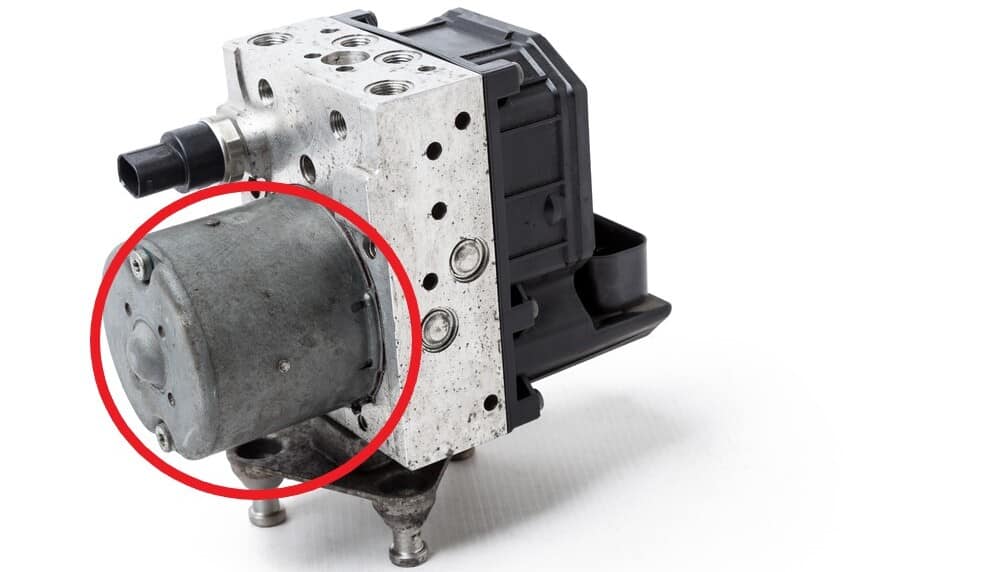
The ABS system must control the brake fluid that comes through the hydraulic pump. This pump is responsible for pushing brake fluid through the cylinder, so it’s distributed to the brakes when the brake pedal is pushed down.
The ABS system also adjusts the brake pressure to each wheel based on the reading from the speed sensor. With this information, the appropriate amount of fluid can be pumped to the brakes, where it is needed the most.
In most cases, this system works just as intended. However, the hydraulic pump can fail, or you could face a malfunctioning valve in the hydraulic system. Neither of these situations is good. The pump is subject to debris and metal shavings from contaminated brake fluid, it can wear out. However, if you get the fluid changed regularly, you help prevent this situation from occurring.
When you have issues with the pump, braking performance is negatively impacted. The deterioration will start out slowly and get worse as you let it go. If the master cylinder fails, the brakes can feel good one minute, but you can lose complete power a second later, making it very dangerous to drive. Additionally, there could be a fluid leak as a result of the defect. If the fluid is seeping out, the pedal can start out firm, but it will get spongy until it sinks down to the floor.
5. Blown Fuse
The ABS runs because of the electrical parts of your car. In fact, the ABS runs on its own fuse. These fuses are not immune to failure. For no reason at all, a fuse can blow at any time.
Thankfully, it isn’t difficult to check the fuse. In fact, it might be the first step of diagnostics if you aren’t noticing any symptoms other than the light on the dashboard.
6. Low Brake Fluid
The ABS pump needs brake fluid to work correctly. This fluid is pushed through the cylinder to feed the brake system. If there’s not enough brake fluid, you are going to run into issues, including a possible illuminated ABS light.
If the fluid is low, it’s important to figure out why. It’s possible that you have a leaking fluid reservoir, air in the brake system, or a seal that is damaged. It could also be that the brakes are worn. If you allow the system to get too low, the ABS module won’t balance the pressure between each wheel, so there will be slippage and skidding.
As the brake fluid continues to get lower, you might also see that it becomes harder to stop. There’s also the chance that more noise will occur when you are braking.
Diagnose ABS Light
If you want to figure out what needs to be replaced, consider following these steps.
- Check the ABS fuse. This step only takes a few seconds, and it can save you a lot of headaches. It’s located in the fuse panel under the dash. You can find a diagram pointing to the fuse location in your owner’s manual.
- Check the brake fluid level. If the brake fluid is low, add some more. If it looks contaminated, drain it and refill it.
- Check the system for leaks. You should be able to see leaking brake fluid from under the car. Fresh fluid has a light yellow color, while contaminated oil will appear slightly darker – even brown.
- Test the ABS wheel sensor with a voltmeter. You can also read trouble codes with your OBDII scanner, and that should point out if there’s a fault.
If you are having trouble finding the problem, it’s time to take your vehicle to a qualified mechanic for further diagnostics.
How to Fix ABS Light
You can spend as little as $20 to as much as $1,000 to fix the ABS light, depending on the problem causing it to come on. I will take a closer look at the most common repairs to fix the ABS light, but you must perform a complete diagnosis to determine what’s causing your problem before you start replacing parts. After all, there is no reason to put parts on the car that aren’t needed.
The cheapest issue would be a blown fuse. Not only should this fix cost you $20 or less, but it’s easy to fix. Simply open the fuse panel and replace the one running the ABS. The next easiest fix would be to add more brake fluid if the break fluid is low. This fix only costs you the price of the brake fluid, as long as there are no issues causing a leak.
From here, you could replace a faulty speed sensor or a bad ABS tone ring. The average for this repair might be between $100 and $300. This seems to be one of the most common issues with the ABS light. There’s also the chance that you need to replace the ABS module or rewire the system. Fixing the wiring fault might be cheaper, but a new module will probably cost you $200 to $600.
The largest of the problems would be to replace the hydraulic pump or a master cylinder. The master cylinder replacement could be between $300 and $600, while putting a new hydraulic pump can easily hit $1,000 or more.
Can I Drive with the ABS Light On?
The short answer is yes, but it really depends on your situation. This answer comes with a big warning. The only way you should drive with the ABS light on is if you know there are no issues. You don’t want your normal braking affected, or you put yourself at risk.
The ABS system will be out of function if the ABS light is on, and therefore it may cause danger if you are not used to driving a car without ABS.
Even if the braking system seems to be fine, it could fail at any time if there’s a problem. For that reason, it’s imperative to take the ABS warning light seriously. You don’t want to be left stranded somewhere, and you don’t want to cause an accident.
I understand the need to save money, and we know that all car repairs don’t always show up at the best times, financially. However, the cost you will pay if an accident is caused can be immeasurable. Instead of taking chances, I recommend having the ABS codes scanned to find out what the problem is immediately.
How long can you go with the ABS light on?
It’s not recommended to drive with an ABS light on at all, especially not if you are not used to driving cars without ABS. But even if you know how to drive cars without ABS, you still want to check what’s causing it. You should take your car to a mechanic as soon as possible to have it diagnosed and repaired.
Can low brake fluid cause ABS light to come on?
Yes. If the brake fluid level gets low, it’s possible that the ABS pump will lose pressure and the anti-lock brake system (ABS) will go into “fail-safe” mode. When this happens, the ABS light will come on.
Can you drive without ABS?
You can drive without ABS, but it is not recommended. Without ABS, your braking ability will be reduced, and it will be more difficult to control your vehicle in emergency situations. If you must drive without ABS, be sure to allow extra distance for braking, and be extra careful when driving in slippery conditions.
Can a weak battery cause ABS problems?
A weak battery could cause ABS problems, but it’s not very common. You will more likely find other malfunctions with your car first if your car battery is bad. However, if you’re having ABS issues, it’s worth checking your battery to see if it may be the culprit.
Categories: Brakes, Warning Lights








